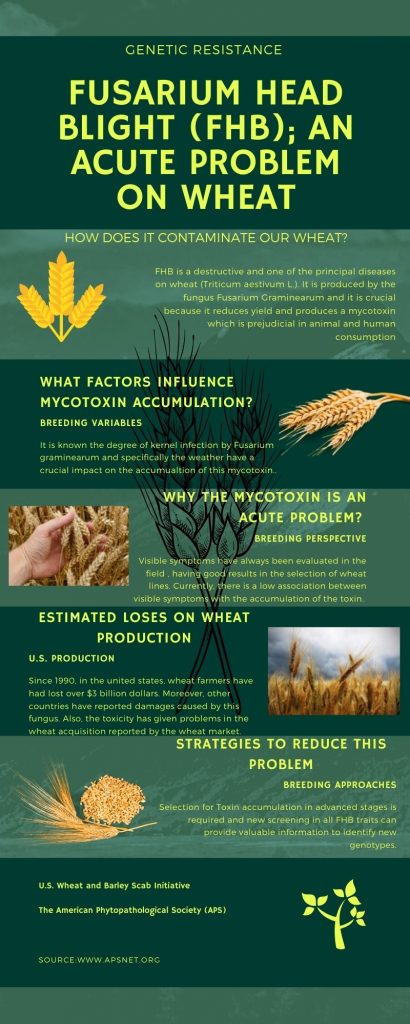The recipients of the 2021 CAST Science Communication Scholarship were invited to write a blog on their current research topic or on the importance of effectively communicating science.
Written by Lenin Rodriguez | Ph.D. Student in Plant Breeding, The Ohio State University
Fusarium Head blight (FHB) is one of the most critical diseases on wheat, and its effect is produced worldwide. The damage of this fungus provokes a reduction in yield and mycotoxin production, which is toxic to animal and human consumption. Host resistance is the primary approach to decrease the damage caused by this fungus. During the last decades, wheat breeders in the United States started to work on disease resistance to reduce pesticide application.
There are so many traits that breeders evaluate on FHB. However, it has been seen that the visual symptoms (visual variables) somehow are independent of those the fungus produces. Therefore, finding new strategies to understand how this fungus accumulates the mycotoxin in the grain, the genetic resistance, and inoculation methods is necessary. Also, it is essential to understand the relationship between the visual symptoms and the fungus accumulation using molecular techniques. Finally, as no wheat lines or varieties contain enough genetic resistance, it is necessary to look for new sources to reduce this problem.
On the other hand, as FHB produces the toxin, new breeding methods have been proposed to evaluate it as Genomic Selection (GS) that uses marker-trait models to predict the performance of phenotypes. GS is a promising tool for making predictions and increasing the genetic gain of quantitative traits considering time and cost. In GS, a training population is required to estimate the marker effect used to make the predictions. Then, the phenotypes are selected considering their Genomic Estimating Breeding Value (GEBV), which helps select the best performance of the lines before sending them to the field. Therefore, the use of GS to predict the performance of wheat lines from grain plains (Nebraska and South Dakota) using Ohio data could be a new strategy for FHB resistance. The FHB assessment in the great plains has been inaccurate because of the low FHB pressure, heat, and windiness. However, the wheat breeding program at the Ohio State University has proposed to test the lines from the great plains in Ohio, where the weather conditions and disease pressure are better to assess the resistance to FHB. This research will provide new approaches to assessing FHB for the wheat breeding programs in the great plains.

*CAST rotates its scholarship eligibility based on the location of its annual meeting. As the scholarship grows, we hope to include and support more students, regardless of the location of our annual meeting.
Your donation to CAST helps support the CAST mission of communicating science to meet the challenge of producing enough food, fiber and fuel for a growing population. Every gift, no matter the size, is appreciated.